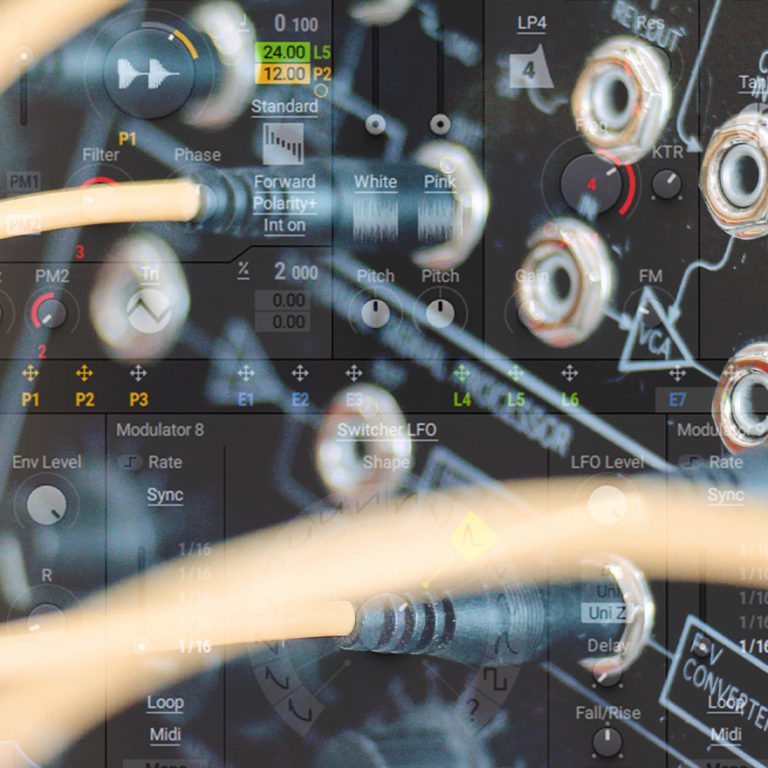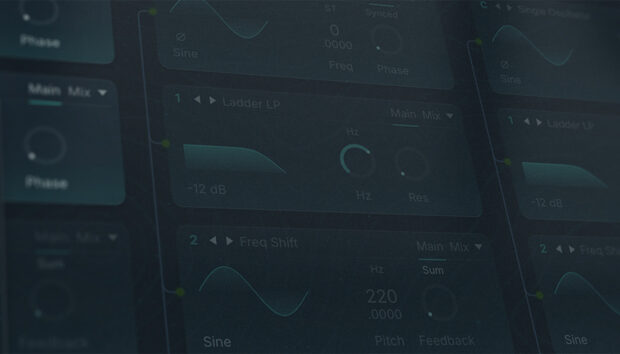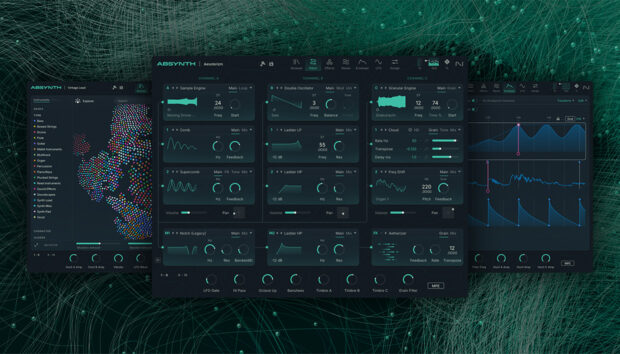It is not an overstatement to say that synthesizers completely revolutionized the world of music.
As synths gained popularity through the second half of the 20th century, certain sounds became iconic, birthing a multitude of new techniques for making music, fresh genres, and futuristic masterpieces.
Digital music production relies heavily on synthesized sounds–both hardware and software. But how does the process work, and what can you do with a synthesizer to add a new dimension to your own music?
The following guide explores what a synthesizer is, the different kinds available, and how you can use synths to generate and manipulate sounds. With this background, you’ll be ready to get behind the controls and start expanding your sonic horizons.
You can follow along with synths from Native Instruments.
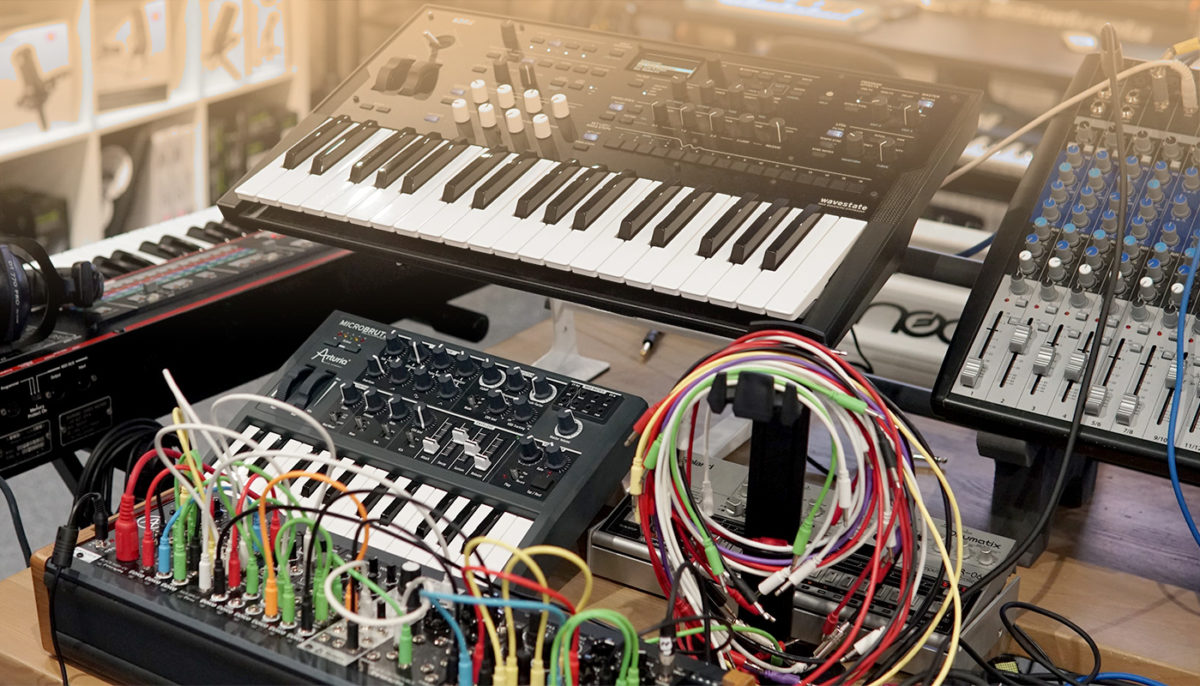
What is a Synthesizer?
We should begin by laying out some core terminology that may be unfamiliar.
‘Synthesis’ is a process of combining elements to form a connected whole.
A ‘synthesizer’ is a category of electronic musical instruments that produce sounds by generating and combining electrical signals.
There are a few ways to play a synthesizer. Keyboards are the traditional input, but you can also trigger looping patterns with a sequencer or arpeggiator.
Sound Waves
Synthesized sounds begin life as basic audio signals generated by oscillators. They come in different shapes, known as ‘waveforms’.
A smooth, continuous curve is called a sine wave. This sounds clean and perfect to our ears because it represents a single frequency.
But we hear all sorts of diverse sounds in the real world, as different timbres add noise and harmonics (i.e. color) to the root frequency, producing more complex, irregular waveforms.
The ‘frequency’ of a wave is the time it takes to complete one oscillation, measured in hertz (Hz). This determines what pitch we hear, and can be tuned to play different notes of the scale.
As signals pass through the components of a synth, the basic waveforms are shaped and sculpted by filters and envelopes. Synthesizers can be used to emulate the varying tones of acoustic instruments, or blast off to entirely new, otherworldly realms.
You can hear synths in a wide range of music–from pop to ambient–as well as soundtrack scores for film, TV, and video games.
Analog vs. Digital Synthesizers
The first synthesizers predate our modern era of computers and digital tools, meaning that early forays into the world of synthesis were exclusively analog.
Analog synths generate sound directly from electricity. Different tones are made by controlling the electrical voltages and the route the signal takes as it passes through the synth’s components, wired into a physical signal chain.
The old analog-synthesis pioneers set the template, establishing precedents that manufacturers and musicians continue to follow to this day.
Meanwhile, the emergence of personal computers has caused a worldwide explosion of new power and potential in digital technology.
Early digital synthesizers allowed you to store data on microchips for the first time and re-construct the modules of analog synthesis in digital binary code, as well as the ability to load and save patch settings.
As computer chips are significantly cheaper to produce than the intricate parts of an analog synth, digital synthesizers could pack in more features and sounds at a more affordable price point.
The exponentially evolving tech pushed innovators and product designers to completely re-think synthesis and invent new types of synth, utilizing the tools of a new era.
Software vs. Hardware Synthesizers
Analog synthesizers make sound by passing electricity through physical components. This is what you hear directly, the signal is never converted into digital audio.
This means analog synths are always hardware. Many producers favor analog specifically for its physicality, resulting in dynamic performances and rich, warm tones.
In contrast, digital synthesizers can be either hardware or software. With the power of modern computers, it is possible to create music entirely ‘in the box’, using music production software and virtual instruments.
This is how most people produce music nowadays, running virtual synths inside a Digital Audio Workstation, or DAW.
A software instrument is commonly called a plug-in, VST (Virtual Studio Technology), or AU (Audio Unit). Soft-synths tend to be cheaper and more adaptable, integrating easily into your DAW project without the hassle of wiring.
On the other hand, hardware digital synths retain the tactile, physical interface of analog gear. Likewise, many producers using software like to connect a controller or keyboard, which send MIDI to synthesizer plug-ins.
Monophonic vs. Polyphonic Synthesizers
Monophonic synths can only play one note at a time, making them ideal for bass or lead lines.
With polyphonic synthesizers, you can play chords. Synthesizers come in all shapes and sizes, so it really depends what kind of sound you have in mind.
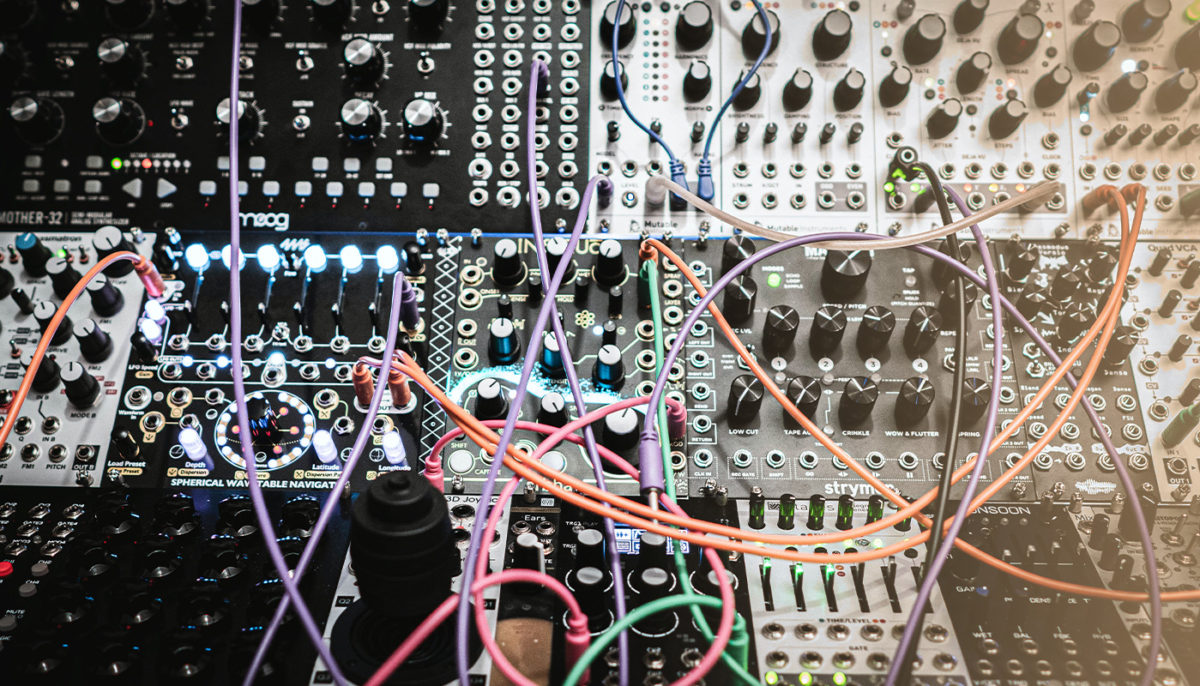
Anatomy of a Synth
We’ve touched on the signal chain, the stages of synthesis that a signal passes through to create different sounds.
A signal is generated by an oscillator, sculpted with filters and envelopes, and further warped by adding modulation from a low-frequency oscillator, or LFO.
Oscillators
The signal path begins with an oscillator generating a sound frequency in the shape of a waveform.
Earlier we met the smooth curve of the sine wave, but there are other waveform shapes created by mixing in additional frequencies.
A sawtooth wave is a sharp, triangular zig-zag, the opposite of a sine wave. The sawtooth has more of a buzz, the result of many harmonics filling out the sound.
A square wave acts like a switch, a binary ‘on/off’. A pulse wave is similar, but you can adjust the relative ‘on/off’ time so that rather than a square, the waveform is asymmetrical and it creates more of a reedy tone.
Many synths also feature a noise generator. This is the sound of radio static—a random jumble of frequencies with no discernible shape. Noise can be blended with other waveforms to give them more thickness and crunch.
Filters
If waveforms are the raw material of sound, then filters and envelopes are a sculptor’s tools.
The two most common types of filter are low-pass and high-pass. A low-pass filter (LPF) rolls off everything above a chosen cut-off frequency, while a high-pass filter (HPF) does the opposite—retaining the high end of the mix.
Filters can boost as well as cut frequencies, for more radical effects. One of the most instantly recognizable synthesizers is the classic Roland TB-303—its twangy bass sound the star of innumerable acid house and techno bangers.
The 303 nicely illustrates the range of effects possible with filters using ‘resonance’. High resonance creates a loud peak at the cut-off frequency, more of a ringing or shrieking sound, while low resonance is milder and more rubbery. You can use resonance creatively to boost and emphasize particular pleasing harmonics.
Envelopes
Envelopes control how a sound behaves over time from the moment it is struck.
An envelope has four stages: Attack, Decay, Sustain, and Release. To demonstrate these, let’s compare the sounds of a hand-clap and a bell.
A hand-clap is a short, snappy sound that dissipates almost straight away. In contrast, the resonant shape and material of a bell cause it to ring out at a particular frequency, which disperses slowly as the vibrating bell returns to a standstill.
Attack is the initial ascent to peak amplitude, or volume—a long attack sounds like a slow fade in. A hand-clap has an extremely short attack, while a large church bell might take a second to reach its peak as vibrations spread through the metal.
Decay is how quickly the sound dissipates from this initial impact. A hand-clap has a short attack and short decay, while a bell has a slightly longer attack and a much longer decay time.
Sustain is how long a note continues when you hold it down. A piano’s sustain pedal allows the frequency to continue resonating for a few seconds until the string eventually stops vibrating. But synthesizers can sustain a set volume forever—or rather, as long as you decide.
Release determines how long it takes for a note to fade away to silence after you stop playing.
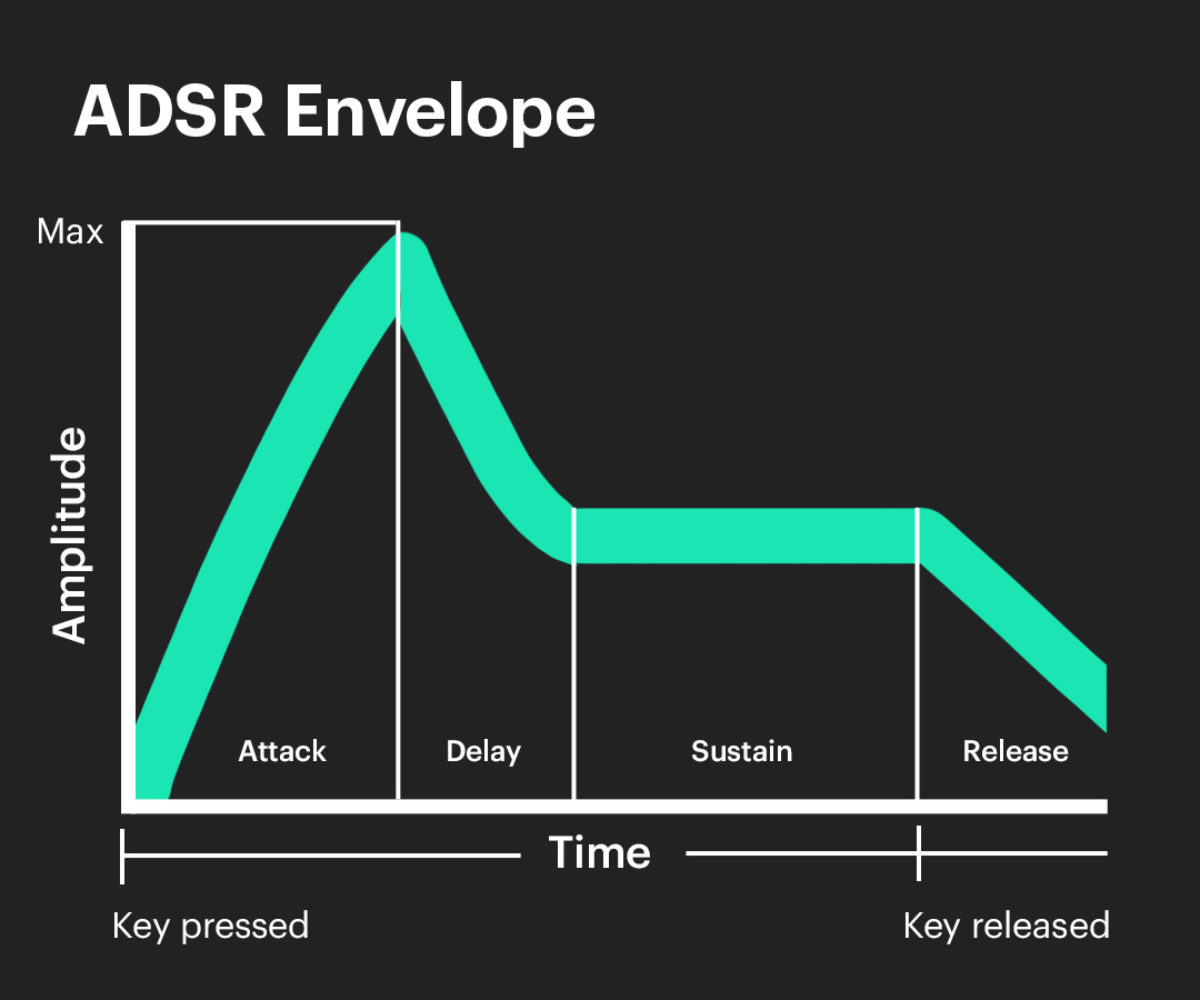
ADSR Envelope Graph
LFO
An LFO is a type of oscillator. Instead of generating an audible signal, it transmits a much lower frequency which can be routed into regular oscillators or filters to add modulation.
LFOs are used to create shimmering vibrato or tremolo effects, or add rhythmic fluctuations over time to truly bring your music to life. The wave of an LFO fluctuates back and forth at a fixed rate, just as if you were tweaking a parameter by hand.
LFOs can be set to behave like each of the waveform shapes, either synchronized to the tempo of your project or moving freely for more organic and unpredictable results.
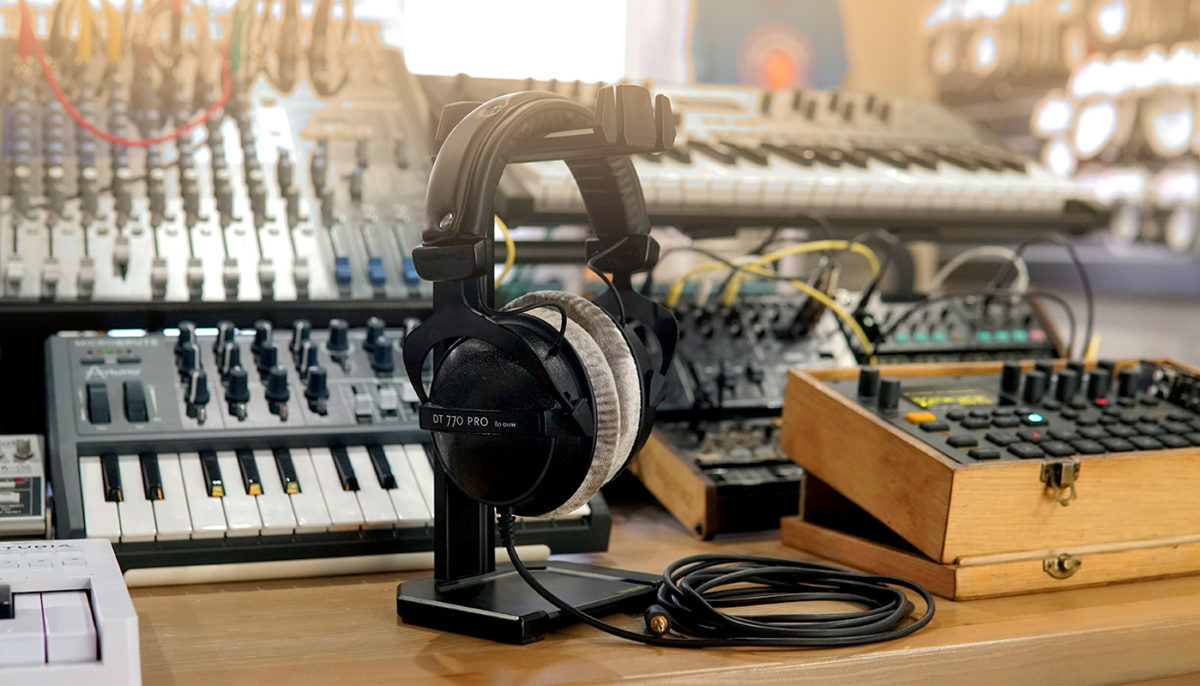
Types of Synthesis
‘Synthesizer’ is really an umbrella term for a wide range of different ways to generate and shape sounds electronically.
Subtractive
The first synthesizers used a process called ‘subtractive synthesis’, i.e. reducing portions of the full frequency range as the base waveform passes through filters and envelopes.
You can think of it like sculpture, whereby the art is formed by subtraction, the desired shape created by chipping away surplus material.
Native’s MONARK offers a good example of subtractive synthesis, as it presents the classic analog signal-flow layout in a compact virtual monosynth.
Analog & Virtual Analog Synthesis
We’ve explored how analog synths produce sound from electrical signals, and the physical presence of the circuitry adds warmth to the tone.
In contrast, digital synthesizers operate just like a computer, constructing sound waves from exact values in binary code.
In terms of sound, this pinpoint precision is both a blessing and a curse. The very unpredictability of analog circuits creates rich, sometimes erratic tones that are pleasing to our ears and can leave digital synthesis sounding cold and lifeless in comparison.
Virtual synth developers have found a remedy for this, working with software algorithms to simulate the complex behavior of analog synthesis in ‘virtual analog’ or ‘analog-modeling’ instruments.
SUPER 8 is a software reimagining of classic analog polysynths. The eight-voice synthesizer is designed to sound and feel vintage, capable of rich strings and pads as well as fat mono tones.
The most famous old analog machines tend to be rare and costly to get hold of these days. Thankfully, many have been reproduced in modern software versions.
For example, RETRO MACHINES is a sample collection of real analog synthesizers, covering the electronic pop heyday of the ‘70s and ‘80s.
In many ways, virtual analog is more practical and reliable than the real thing. It can only ever be an approximation of true analog, but it is getting increasingly tough to notice the difference.
Additive Synthesis
Rather than subtracting from the original wave, additive synthesis works by combining ‘partials,’ multiple sine waves for different bands of the frequency spectrum.
Additive synths can produce strange, complex sounds that are ideal for designing pads, soundscapes, and drones.
RAZOR is a software synth that packs the complexity of additive synthesis into a clean, familiar interface—so you can focus on making cutting-edge sounds.
FM Synthesis
The theory behind FM (frequency modulation) synthesis is quite complicated. It uses two oscillators: one to generate an original frequency, called a ‘carrier’, and a second signal that modulates the first by introducing additional harmonics over time.
FM synths are best known for glassy bells and electric keys that fully embrace the clean, perfect sound of digital synthesis.
FM8 is a popular software FM synthesizer with an emphasis on ease-of-use—the power of digital synthesis in an accessible and intuitive interface. Start playing around in FM8 and you begin to learn the theory of FM synthesis, without needing to decipher any scientific equations.
Wavetable Synthesis
Wavetable synthesis takes sound to epic new levels. Rather than starting with a basic waveform, it uses a sample of a single hit. This can be anything from a recording of an acoustic instrument to a sound generated by another synth. It can then generate wildly different sounds in the shape of this sample.
Wavetable synths can reproduce real-life, acoustic sounds and textures. The possibilities here are practically endless—with so much potential beyond basic waveforms, you have hundreds of sound sources to choose from. The main difference is in generating the initial wave–the later stages of synthesis are the same.
MASSIVE and MASSIVE X are the modern champions of wavetable synthesis famous for the snarling, wobbling bass lines in countless dubstep and EDM hits.
Modular Synthesis
Modular is synthesis at its most expansive and customizable. Whereas most hardware synths contain all the components connected in one box, modular synths are completely deconstructed into separate ‘modules’.
It might be easier to think of a modular synth as a web of mini synthesizers. You can physically re-order the signal chain by wiring it however you like. This is called ‘patching’. Modular gives you complete, open-ended freedom in sound design.
This is more advanced-level sound synthesis, but REAKTOR Blocks offers a pretty comprehensive package to get started in the world of modular—building your own custom synth from scratch.
Granular Synthesis
Granular synthesis works by splitting a sound sample into very short segments, called ‘grains’. These can be modulated and layered to build up unique, ethereal atmospheres that morph and evolve over time.
STRAYLIGHT is a software granular synth offering enormous scope for designing and modulating sounds. PHARLIGHT is geared towards granular effects for vocals, while ASHLIGHT focuses on dark textures and soundscapes.
Physical Modeling
Synthesizers have attempted to recreate the sounds of acoustic instruments since the very early years, but it is very difficult to get an accurate tone using basic waveform oscillators.
This is where physical modeling synthesis comes in handy. Not only can you control the shape of the wave, but also simulate the way it is struck, for example, with a mallet or a bow. This allows for incredibly realistic nuances, capturing the spontaneity of real, live performance.
REAKTOR PRISM is a software polyphonic synthesizer that draws on physical modeling synthesis to produce a wide range of pristine, unconventional sounds.
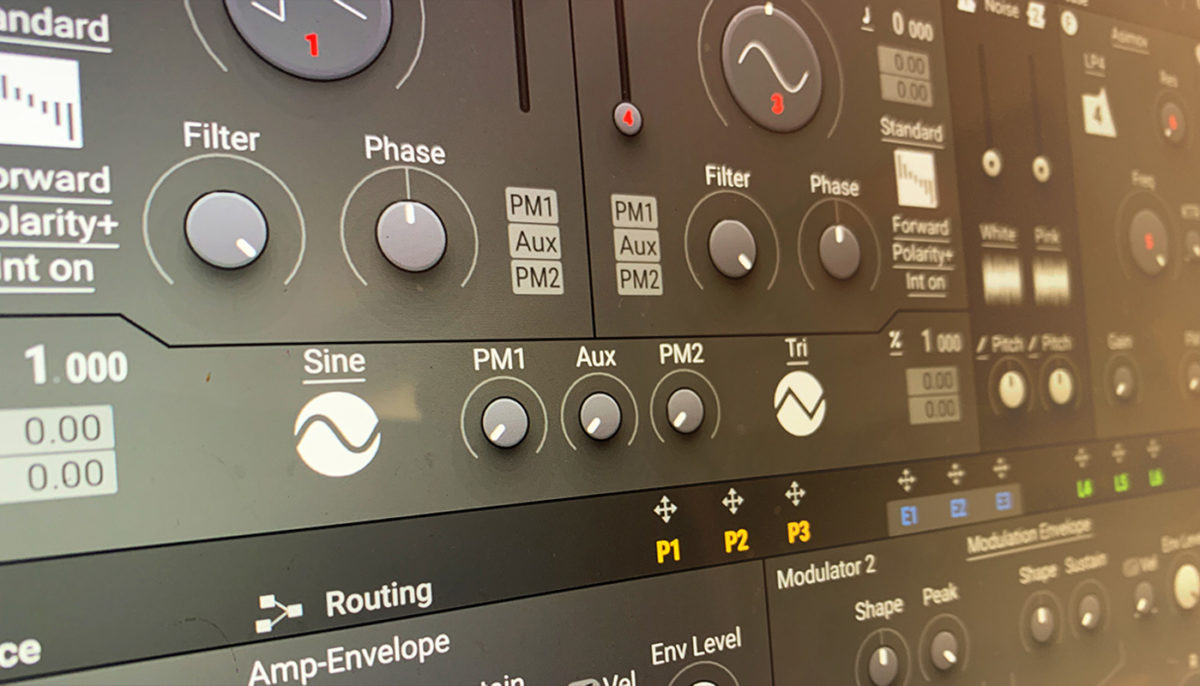
Dive into Synthesis
In this guide, we have introduced the mechanics of a synthesizer, explained the different types available, and provided some helpful resources for you to explore.
The science behind sound synthesis is deep and complex, but you need not get bogged down in the theory at first. The trick is experimentation. Trust your ears, adjust knobs and parameters, and discover how this affects the sound.
Ready to get started? Explore the Native Instruments catalogue of synths to find your next sound, and check out a complete list of EDM software and VSTs including synths that can help you get the sound you’re looking for.








